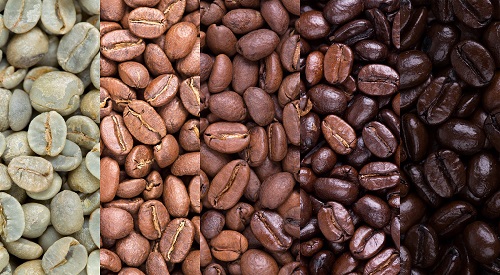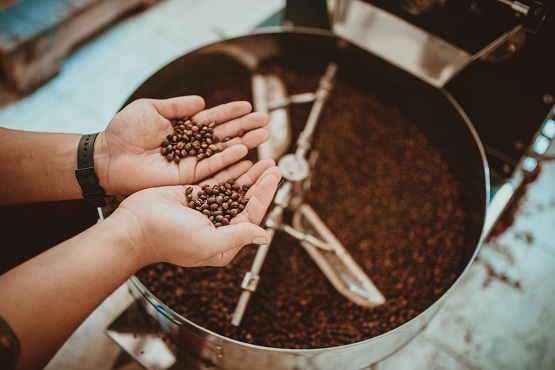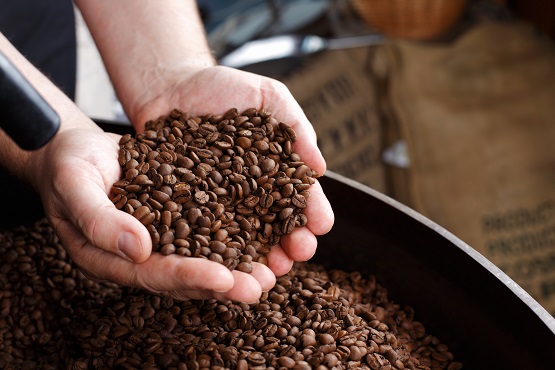
For many, there are two types of coffee: hot and iced. While these preferences may factor into how your beverage is enjoyed, there is so much more to coffee than temperature. One of the most important qualities to pay attention to when purchasing and consuming coffee, is the roast. Roasting introduces heat to soft little green beans, unlocking a world of limitless potential.
In this article, you will learn the complexities of how roasting affects the taste, look, and feel of coffee. The facts may surprise you.
Overview
The terms “light,” “medium,” and “dark” are derived from the color roasted coffee beans take on as a result of time spent exposed to heat. Light roast coffee is roasted for the shortest amount of time or at the lowest temperatures, while dark roast beans receive the longest roast and highest temperatures. Simply put, the time and temperature used to roast your coffee beans is the number one indicator of what the final product will taste like.
Let’s break down the three variations:
Light Roast
While these beans spend the least amount of time in the roasting process, light roast coffee beans carry the highest concentration of caffeine. That’s right. Where a popular misconception may lead you to believe dark roast coffees have the most caffeine, the opposite is actually true.
During the roasting process, liquid is drawn from the beans, drying them out and making them less dense as they roast. The lower the density, the lower the caffeine concentration. Now, this doesn’t mean light roast coffee is rocket fuel compared to darker roasts, it all comes down to how the coffee is prepared. If scooping ground coffee into a filter, light roast coffee will have a stronger caffeine profile due to having more mass than dark roast. If weighing beans and then grinding them fresh, dark roast will have a stronger caffeine profile due to more beans with smaller mass. Caffeine levels boil down to how you are brewing your cup.
Another characteristic often pointed out about lighter roasts is a level of “acidity.” This also has to do with how the beans are roasted. “Acidity” refers to the brightness of the natural fruity and herbal notes of lighter roasts. You are getting more complexity from the bean here, leaving a flavor profile less muted than a darker roast. If you have heard a cup of coffee referred to as “acidic,” there is no actual acid involved, the notes are simply closer to that of the bean’s origin.
Knowing that the bean’s origin flavors are on full display with light roast coffee, this is sometimes the best way to discern the quality of the beans you are drinking. There is nowhere to hide in a delicate light roast.
Recommendation: Starbucks Veranda – Notes of toasted malt & baking chocolate
Medium Roast
If the intensity of a dark roast and the brightness of a light roast are not your speed, medium roast coffee is a happy medium. Medium roast coffee is by far the most commonly found coffee on grocery shelves and workplaces due to the balanced nature of its flavor profile.
The slightly longer roast time allows medium roast coffee beans to shed some of the brightness and development more intense and clean notes that serve as the perfect canvas for those who like to add milk and sugar to their cup.
Roasting development can be gauged by “cracks,” which, similar to popcorn kernels popping, is a release of pressure due to moisture leaving the beans. Light roast beans are pulled after the first crack, while medium roast beans are pulled just before the second and final crack.
Another characteristic of medium roasts is a fuller body compared to that of their lighter counterpart. These cups have the rich, deep brown hue that many are accustomed to.
Overall, medium roasts are widely preferred for a reason. The balance of flavor makes them an easy entrance point for many first time coffee drinkers and a comfortable choice for an “every day” cup.
Recommendation: Peet’s Cafe Domingo – Notes of toffee sweetness and a crisp, clean finish
Dark Roast
The final variation of coffee roast levels is the dark roast. These beans have run the gamut on the roasting process, developing rich, intense, flavor notes. These beans have lost the most moisture, making them the least dense of all coffee beans, and in turn, the least caffeine-concentrated. Dark roast beans are easily distinguished by their signature sheen of oils released after the roasting process. These oils result in a velvety full body put on full display in espressos.
Dark roast beans trade a complex profile for a more singular, pronounced taste. Dark chocolate, nuts, and caramel are the most common tasting notes. Not only are these flavors deep, hints and aromas of the roasting process are evident in dark roasts which many times leads them to be referred to as “coffee drinkers’ coffees.” Perhaps not the best place to start on a coffee journey, but an enjoyable destination for those who appreciate coffee in its truest form.
Recommendation: La Colombe Monaco – Notes of chocolate, roasted nuts, caramel apple
When it comes to light, medium, and dark roast coffee, the best choice is what you like. Taking the time to learn more about what you are drinking can turn a necessary part of your daily routine into an experience that makes each morning just a little better. For more information on coffee roasting, click here.




